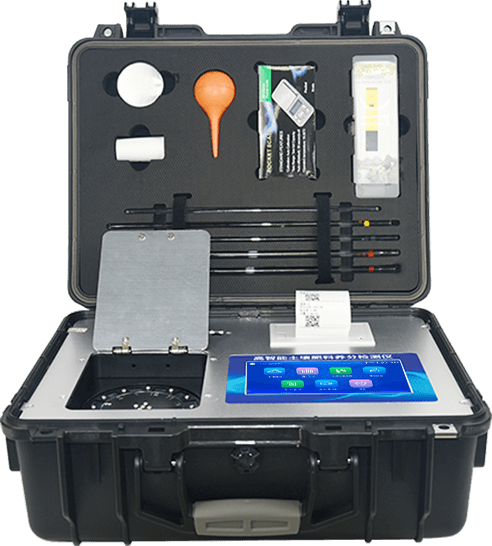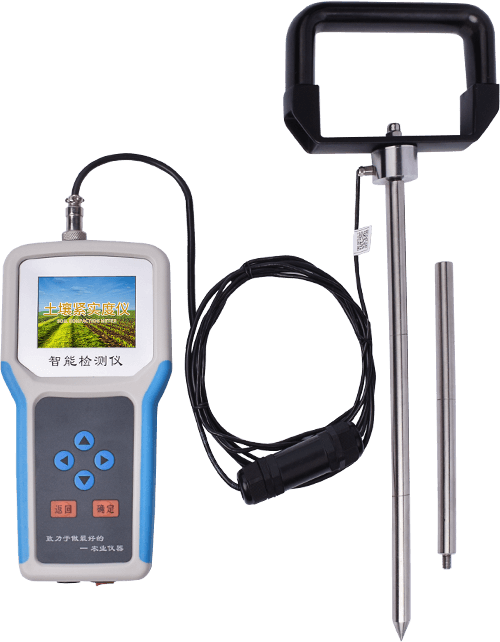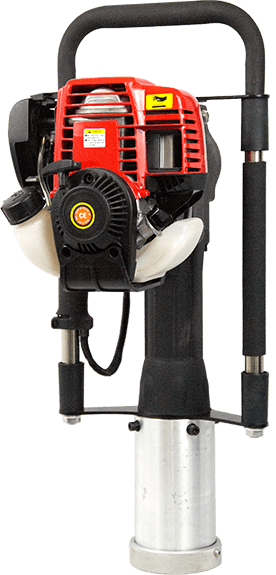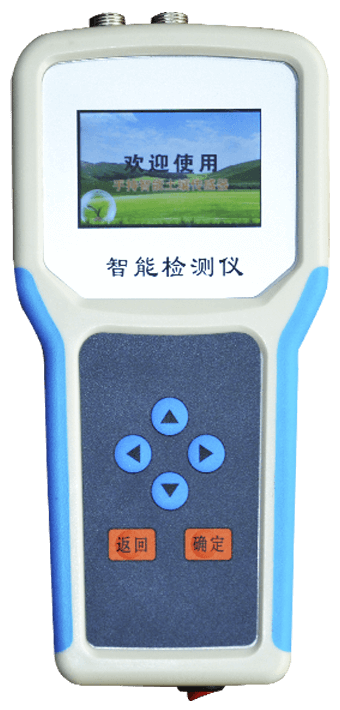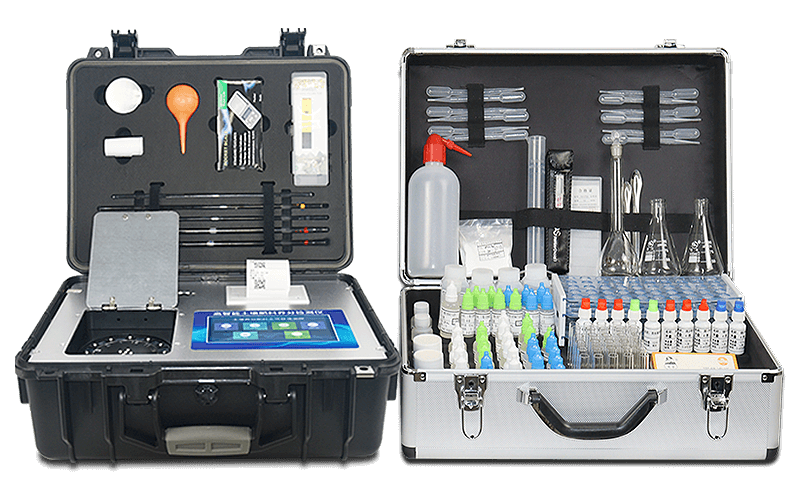
Fertilizer Nitrogen, Phosphorus, and Potassium Analyzer
- Product Number:LD-FE
- Product Difference:12 rotating channels, detecting the content of trace elements and various heavy metals in chemical fertilizers, organic fertilizers (including foliar fertilizers, water-soluble fertilizers, spray fertilizers, etc.), and plants
Product Introduction
The fertilizer nitrogen, phosphorus, and potassium tester is fully functional, with a comprehensive range of testing projects available both domestically and internationally (all types of reagents can be purchased separately). The instrument is fully equipped, integrating reagents, instruments, and equipment into one unit, making it easy to carry. It functions like a small laboratory, requiring users to only provide distilled water to complete all operations within the specified timeframe. It is suitable for agricultural services or fertilizer dealers to authenticate fertilizer authenticity, fertilizer manufacturers for production control, and agricultural supply companies for anti-counterfeiting efforts to regulate the agricultural supply market.
The instrument has reliable performance and operational stability that exceeds the standards of JJG179-90 by more than 10 times, with repeatability reaching the level of a grating-type spectrophotometer.
It can detect the following parameters:
1. Fertilizer nutrients:
① Nitrogen, phosphorus, and potassium in single-component fertilizers.
② Ammonium nitrogen, nitrate nitrogen, phosphorus, potassium, and urea in compound (mixed) fertilizers and urea.
③ Available nitrogen, available phosphorus, available potassium, total nitrogen, total phosphorus, total potassium, organic matter, and various humic acids in organic fertilizers (foliar fertilizers).
2. Trace elements such as calcium, magnesium, sulfur, iron, manganese, boron, zinc, copper, chlorine, silicon, and molybdenum.
3. Various heavy metals (lead, chromium, cadmium, mercury, arsenic, nickel, aluminum, fluorine, titanium, selenium)
Product Features
Testing of fertilizers, organic fertilizers (including foliar fertilizers, water-soluble fertilizers, spray fertilizers, etc.), and plant tissues for available nitrogen, available phosphorus, available potassium, total nitrogen, total phosphorus, total potassium, organic matter, pH, calcium, magnesium, sulfur, iron, manganese, boron, zinc, copper, chlorine, silicon, molybdenum, and other trace elements, as well as lead, chromium, cadmium, mercury, arsenic, nickel, aluminum, fluorine, titanium, selenium, and other heavy metals.
Utilizes proprietary high-precision filter technology analysis method (Patent No.: ZL 2018 2 1777724.7), with the colorimetric cell section employing standard 1cm colorimetric cells. No mechanical displacement or wear, ensuring precise optical path testing and positioning, with detection results exceeding national standard requirements.
Android smart operating system with more efficient and user-friendly operations. The instrument comes standard with Wi-Fi network upload, 4G network transmission, and GPRS wireless remote transmission for rapid data upload.
Built-in crop expert fertilization system that calculates recommended fertilization amounts for over 100 types of national agricultural, fruit tree, and economic crops based on target yields, providing scientific guidance for agricultural production based on fertilization formulas.
Features a precision rotating colorimetric cell design for consistent light source accuracy, ensuring detection precision. Can rapidly test 12 samples at once, enhancing testing efficiency and reducing costs.
Equipped with a data reception platform, enabling wireless data upload via local area networks or the internet without cables, facilitating data management and long-term analysis.
The instrument incorporates built-in plant nutrient diagnosis standard spectra, enabling leaf comparison based on images of nutrient deficiencies in various crops to diagnose nutrient deficiencies or excesses.
The instrument is equipped with a new-generation high-speed thermal printer, automatically printing test reports and QR codes upon completion of testing.
High-sensitivity 7-inch capacitive touchscreen with high-definition and high-interactivity display, significantly reducing the cumbersome operations and errors associated with traditional instruments.
High-strength PVC engineering plastic carry case design, durable and portable. Power supply supports both AC and DC, enabling field testing with pre-packaged reagents.
Each channel is equipped with a four-wavelength cold light source, with all light sources maintaining constant current and voltage to ensure wavelength stability. The silicon semiconductor serves as the signal reception system, with a lifespan of up to 100,000 hours. It offers excellent reproducibility and high accuracy.
Product parameters
| Power Supply | AC 220±22V, DC 12V + 5V (can use vehicle power supply or opt for built-in lithium battery) |
| Power | ≤5W |
| Range and Resolution | 0.001–9999 |
| Repeatability Error | ≤0.02% (0.0002, potassium dichromate solution) |
| Instrument stability | ① After preheating for 5 minutes upon startup, the displayed values remain stable within one hour (transmittance measurement) ② Within two hours, the drift does not exceed 0.2% (0.002, transmittance measurement) |
| Linear error | ≤0.1% (0.001, copper sulfate detection) |
| Sensitivity | Red light ≥4.5 ×10⁻⁵, blue light ≥3.17×10⁻³, green light ≥2.35×10⁻³, Orange light ≥2.13×10⁻³ |
| Wavelength range | Red light 680±2 nm, blue light 420±2 nm, green light 510±2 nm, orange light 590±10 nm |
| pH value (acidity/alkalinity) | ① Test range: 1–14, ② Accuracy: 0.01, ③ Error: ±0.1 |
| Testing Speed | Testing one composite fertilizer sample (N, P, K) ≤50 minutes; each additional fertilizer sample increases the time by 20 minutes. Testing five fertilizer samples simultaneously ≤2 hours (including pretreatment time) |
| Testing error | Single fertilizer item error ≤0.5%, total error for N, P, and K ≤1% |
| Interface | Reserved 232 data interface, can be connected to a computer for data transmission |
| Dimensions and weight | 43×34.5×19 cm, main unit net weight 5.1 kg |
| Data Printing | Built-in new one-button thermal printer |

 +86 19353291814
+86 19353291814
 +86 19353291814
+86 19353291814